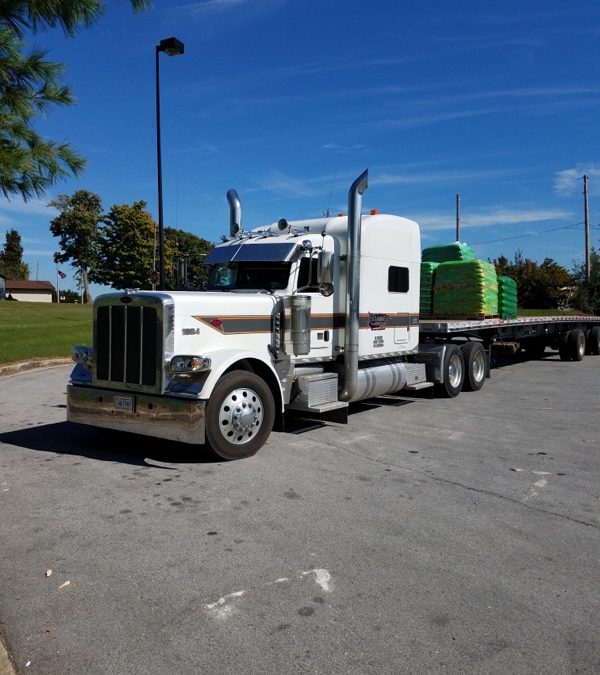Semi and flatbed trucking have been and continue to be essential in the growth of our nation.
At Roane Transportation, we come from a long history in the trucking industry and proudly carry on that history with our fleet of flatbed trucks today. In part two of our series on the history of trucking in the United States, we’ll explore how the innovations that made trucks so invaluable to war efforts in both World Wars led us to the trucking industry we all benefit from today.
Rise of interstate travel
In the years following the end of World War II in 1945, the modern American way of life changed dramatically. As automobile ownership increased, so too did the trucking industry. The infrastructure that enabled trucks to carry goods over long distances grew as well.
In 1956, the Federal-Aid Highway Act was passed, creating 41,000 miles of interstate across the U.S. This act by Congress allocated $25 billion over the next 20 years, which fundamentally changed how the interstate system and trucking look today by connecting major cities across the states. Gone were the days where a driver’s only option was driving trucks down country highways or through urban traffic to reach a destination. Now, truckers had federally funded routes to reach their destinations more efficiently.
Creating the Department of Transportation
In 1967, the Department of Transportation was formed and began organizing, monitoring, and modernizing the infrastructure for drivers in the trucking industry. Along with a wide range of other responsibilities, the DOT oversees federal regulations governing the use of America’s roads and highways.
After a fuel shortage caused gas prices to spike, the Motor Carrier Act of 1980 de-regulated the entire trucking industry (unlike the Motor Carrier Act of 1935). Without regulations, the number of trucking companies doubled, and in 1981, the maximum gross weight limit of 80,000 pounds on interstate highways was adopted by all the states.
Increased cultural presence
As the trucking industry became a part of everyday life, so too did its presence in pop culture. Movies like Smoky and the Bandit (1977), Breaker! Breaker! (1977), and Convoy (1978) helped to normalize the truck driving lifestyle.
With the rise of the internet, truckstop.com became a go-to site for professional drivers looking for a better way to find loads. The website today offers an extensive suite of innovative products all designed to help truckers and brokers in the freight industry.
The first Truck Driver Appreciation Week was celebrated in September of 1998, and the following year the Motor Carrier Safety Improvement Act established the Federal Motor Carrier Safety Administration (FMCSA). The FMCSA is one of the major programs within the DOT and is responsible for regulating and providing safety oversight for commercial vehicles.
The economic impact of trucking
Trucking has been and continues to be essential to the American economy. More than 70 percent of the freight moved throughout the country is transported by semi and flatbed trucks. The trucking industry is involved on some level in 80 percent of freight deliveries, totaling nearly 11.5 billion tons of cargo annually. Revenues from these deliveries can exceed hundreds of billions of dollars annually.
Evolution of the flatbed
After declining in popularity and use in the 1980s, flatbed trucks emerged later as specialized vehicles for uniquely shaped cargo loads. From its early predecessor in the Winton Motor Carriage Company to the modern flatbed truck varieties that carry some of the most challenging loads, flatbed trucks have evolved to be an indispensable part of the trucking industry as a whole.
Types of flatbed trucks
Flatbed trucks can vary widely depending on their intended use. The most common types include:
- Standard flatbed: Maximum Freight weight 48,000 pounds
- Step-deck: Maximum freight weight 48,000 pounds
- Extendable flatbed: Maximum freight weight 43,000 pounds
- Stretch Single-Drop Deck: Maximum freight weight 45,000 pounds
- Double drop: Maximum freight weight 36,000 to 42,000 pounds
- RGN: Maximum freight weight 42,000 pounds
- Side kit: Maximum freight weight 45,000 pounds
Flatbed trucking today
Flatbed trucking is a growing industry where highly skilled drivers are needed to transport challenging loads. Everything from industrial and construction materials and equipment to planes and vehicles can be transported by an experienced flatbed truck operator. There is a wide range of well-paid career opportunities for drivers looking to become a part of this growing field.
Truck Driver Jobs at a Transportation Company in East Tennessee
The semi and flatbed trucking industries are continuing to build on their long and storied history that helped build the United States into the thriving country it is today. At Roane Transportation, we take great pride in being a part of that history and believe it is our responsibility to do our part to continue its growth.
Are you ready to start a career with a historic and important history in our country? Roane Transportation is a transportation company in East Tennessee, and we are always looking to hire passionate, dedicated flatbed truck drivers. Currently, our top areas where we need to hire are East TN; Nashville, TN; Atlanta, GA; and Charlotte, NC. We offer an industry-leading pay and excellent benefits for all our truck drivers, plus guaranteed weekly home time. Our equipment is state-of-the-art to ensure the safety of our drivers and the loads they carry. With our national, regional, and local fleets, you are sure to find the perfect fit with our company. If you are interested in becoming a part of our flatbed trucking team, give us a call today at 865-354-3288 or apply online.

